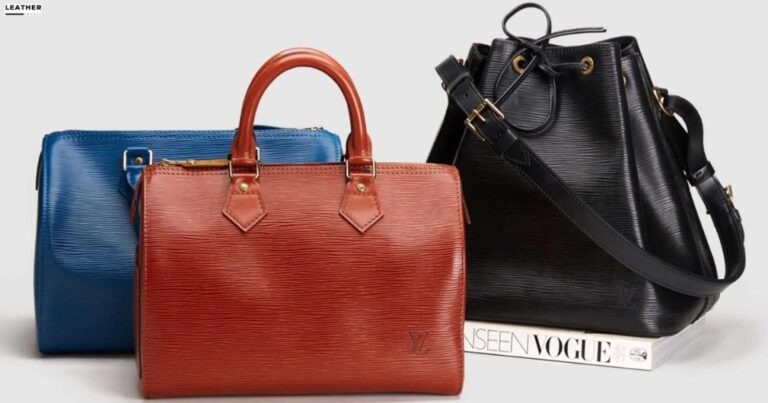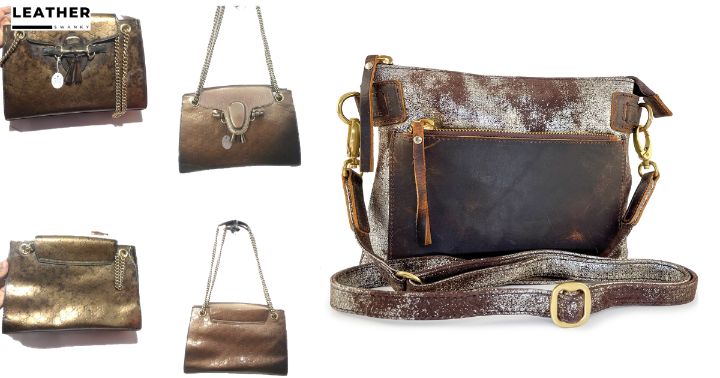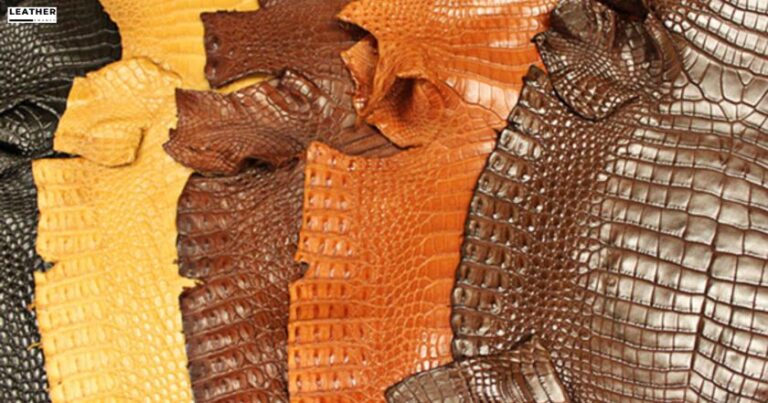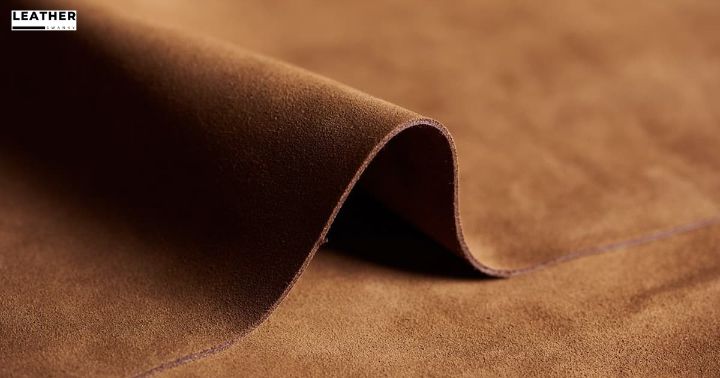How to Get Oil Stains Out Of Leather? Explained in 11 Best Ways
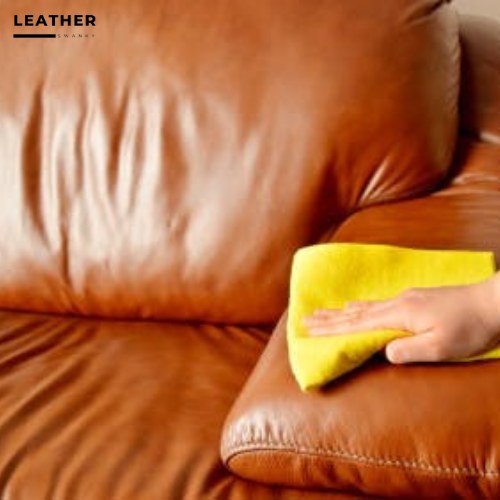
Do you have a leather item that’s been stained by oil or grease? Don’t worry, it can be saved. With the right techniques and products, you can easily get rid of those pesky stains.
Remove oil stains from leather by using proven methods like saddle soap, vinegar-lemon mix, or baking soda-powder technique. Finish with a leather conditioner for lasting protection.
In this article, we’ll show you in detail how to get oil stains out of leather in 11 different ways. Plus, we’ll give some tips on prevention and alternative solutions for certain types of leather.
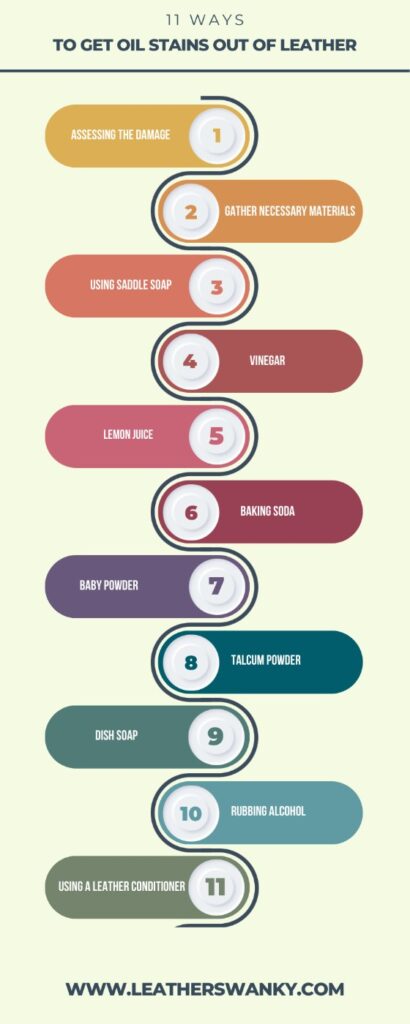
Jump to a Specific Section
- 1 Key Takeaways
- 2 Do Oil and Grease Stains Come Out of Leather?
- 3 Understanding the Different Types of Oil Stains
- 4 Common Causes of Oil Stains on Leather
- 5 How to Get Oil Stains Out Of Leather? 11 Ways
- 6 What Not to Do When Cleaning Oil and Grease Stains From Leather
- 7 Alternative Solution for Certain Leather Types
- 8 How to Prevent Future Oil Stains on Leather
- 9 Additional Tips and Tricks
- 10 Final Thoughts
- 11 Frequently Asked Questions
- 11.1 Are There Any Natural Ingredients That Can Be Used to Remove Oil Stains From Leather?
- 11.2 How Do I Know if My Leather Is a Type That Can Be Safely Cleaned With Oil Stain Removal Methods?
- 11.3 Is It Safe to Use a Leather Cleaner on Oil Stains?
- 11.4 Will the Oil Stain Removal Methods Damage the Leather?
- 11.5 Are There Any Special Care Instructions I Should Follow After Removing Oil Stains From Leather?
- 12 Resources Used for Research
Key Takeaways
- Different types of leather require different techniques to remove oil stains.
- Lemon juice, baking soda, baby powder, and dish soap are effective in removing oil stains from leather.
- Suede and faux leather require specific methods for removing oil stains.
- Preventing future oil stains on leather involves regular conditioning, immediate cleanup of spills, and protection from moisture.
Do Oil and Grease Stains Come Out of Leather?
You may be wondering if oil and grease stains can come out of leather. The answer is yes, with the right technique and products, you can remove the tough stains from your leather items.
However, it’s important to remember that even if you are successful in removing the stain, the oil or grease could still cause damage to your leather over time.
Therefore, it’s important to understand how to properly clean and condition your leather so that it stays looking its best for years to come.
Does Oil Damage Leather?
Oil can damage leather if left untreated. Leather is a natural material that is vulnerable to staining and discoloration from oil-based products, so it’s important to remove oil stains as soon as possible.
Whether the stain is caused by spilled cooking oil, automotive grease, or another type of oil product, it’s essential to know how to get oil out of leather.
It’s also important to understand the different types of stains that come from your leather and what steps you need to take in order to properly remove them.
Taking action quickly and using the right techniques can help prevent permanent damage from occurring and keep your leather looking its best.
Understanding the Different Types of Oil Stains
You may be surprised to learn that not all leathers are equally prone to oil stains. Different types of leather have different levels of absorbency and porosity, meaning some easily soak up the oils while others repel them.
Knowing what type of leather is in your furniture or clothing can help you determine how best to remove an oil stain or even prevent one from occurring in the first place.
What Types of Leathers Are Prone to Oil Stains
Different types of leather have varying levels of vulnerability to oil stains, so it’s important to identify the type of leather you’re dealing with before attempting to remove any oil stains.
| Leather Type | Vulnerability to Oils/Greases | Additional Information |
|---|---|---|
| Aniline Leather | Highly susceptible | Requires special care against oils and greases. |
| Nubuck and Suede | Very vulnerable due to texture | Easier for oils and greases to seep into the material. |
| Semi-Aniline Leathers | Some protection; coating can wear off | The Coating may diminish over time. |
| Pigmented Leathers | More resistant than aniline/nubuck | Protective topcoat enhances oil resistance. |
Keep in mind that no matter what type of leather you have, all oil and grease stains should be treated immediately for best results.
With proper knowledge about the type of leather you’re working with, you’ll have a better chance at successfully removing oil stains from your beloved item.
Common Causes of Oil Stains on Leather
Leather is often prone to oil stains, especially if you don’t take the necessary precautions. Common causes of oil stains on leather include:
- Oil from a person’s skin, such as when sitting on furniture or wearing a leather jacket
- Cooking oils and grease splatters that land on leather items
- Any type of liquid oil, like olive or vegetable oil, that is spilled onto the surface of the leather item
- Grease or petroleum-based products are used to condition and clean leather surfaces
These types of spills can quickly cause damage to your precious items if they are not addressed right away.
How to Get Oil Stains Out Of Leather? 11 Ways
If you’ve recently noticed oil stains on your leather item, don’t panic. Assessing the damage will be the first step in removing them.
After that, gather the necessary materials like saddle soap, vinegar, and lemon juice to start removing the spots.
With a few simple steps, you can have your leather looking good as new again!
1. Assessing The Damage
Before attempting to remove an oil stain from leather, you should assess the damage it’s caused.
Determine the type and severity of the stain: Is it a light grease smear or a deep-set stain? Are there other problems such as discoloration or peeling?
Make sure to examine the entire surface of the leather for any additional grease spots that may have been missed while cleaning.
If left untreated, these spots can worsen over time and become difficult to remove.
Check for any signs of cracking or fading on the leather due to oil absorption, this is usually caused by long-term exposure to Oil Stains.
Lastly, make sure that your Leather is clean before beginning any Stain Removal process; dirt and debris can make spot removal more difficult.
2. Gather Necessary Materials
Gathering the right materials can make removing oil stains from leather much easier. You’ll need a clean cloth, a leather cleaner, and something to blot the oil with.
Be sure to get an oil-based cleaner if you’re dealing with an oil stain on your leather. This will help ensure that all of the residue is removed before it has time to set in or cause more damage.
Avoid using chemical cleaners as they may be too harsh for the material and could damage your item further.
Have these items ready before you start attempting to remove the stain so you can work quickly and effectively.
3. Using Saddle Soap
Now that you have the necessary materials, saddle soap is the next step to removing oil stains from leather.
To clean off the grease, follow this list:
- Apply a small amount of saddle soap on the stained area and gently rub in circles until a lather forms.
- Take a damp cloth and wipe away any excess soap.
- Allow for the leather to air dry completely before continuing with any other cleaning methods.
- If needed, use a soft brush to remove any remaining residue or bits of dirt from the area.
Using saddle soap can help to break down oil and grease deposits while still being gentle enough not to harm delicate leather surfaces, perfect for restoring its natural sheen and condition.
4. Vinegar
Vinegar is another great option to try when it comes to getting oil stains out of leather. To use vinegar, take a soft cloth and dampen it with white vinegar.
Then, dab the stain gently until you start to see the grease coming off the leather.
You can also make a paste with equal parts vinegar and baking soda and apply it directly onto the affected area.
For tougher stains, leave this mixture on for about 15 minutes before wiping away with a damp cloth.
Vinegar is an effective way to clean oil from leather but may also cause discoloration in some cases so be sure to test it on an inconspicuous area first.
With this method, you can easily remove grease from your leather and get the desired results without damaging it further.
5. Lemon Juice
Lemon juice is an excellent alternative to try if you’re looking to remove tough oils and grime from leather surfaces.
To clean oil from leather with lemon juice, here’s what you should do:
- Make a mixture of freshly squeezed lemon juice and water in equal parts.
- Use a soft cloth or cotton ball to apply the solution directly onto the stain on the leather surface and let sit for 10 minutes before wiping it off with a damp cloth.
- Repeat this process until all traces of oil are removed from the leather surface.
- Finish by applying a natural leather conditioner to restore moisture and prevent future spills from staining your item again.
This method is safe for use on most types of leather, making it an ideal solution when removing an oil stain or protecting against an oil spill on your favorite items.
6. Baking Soda
Baking soda is a great choice for removing tough oils and grime from leather surfaces. It’s a natural, safe ingredient that can be mixed with water to make a paste.
Spread the paste on oil stains or areas of grime and let it sit for 15-20 minutes before wiping away with a paper towel.
Baking soda has the power to break up stubborn oils without damaging delicate leather material.
7. Baby Powder
Baby powder is another great way to quickly and easily clean oil from leather surfaces without damaging the material. Here’s how:
- Create a cleaning mixture of 1 part baby powder and 2 parts water.
- Dab directly onto the oil stain with a sponge or cloth.
- Rub gently until the oil stain starts to lift up, being careful not to damage the leather in any way.
- Wipe off any remaining residue with a damp cloth and let air dry for a few hours before using it again.
Using baby powder can be an effective solution for removing stubborn oil stains from leather without having to use harsh chemicals that may damage it further.
The combination of baby powder, water, and gentle rubbing can help break down the oils while keeping your leather looking like new.
8. Talcum Powder
Baby powder has been a go-to solution for getting oil stains out of leather. Talcum powder is another option that’s worth trying, as its absorbent properties can help draw out stubborn oil and grease stains from your leather items.
To get started, use a soft cloth or brush to apply a generous amount of talcum powder onto the stain. Let it sit overnight and then vacuum off the excess in the morning.
If you need an extra boost, mix a small amount of talcum powder with some water and make a paste.
Rub this into the stain with a damp cloth or sponge and let it sit until dry before wiping away any remaining residue.
Finally, clean your leather using a quality leather cleaning solution to ensure that all traces of oil are gone permanently.
Talcum powder is an effective way to remove oil stains on your leather, just be sure to use it carefully so as not to damage your item in any way.
9. Dish Soap or Dishwashing Liquid
Dish soap or dishwashing liquid can be a great solution for removing grease and oil from leather items.
To use it, first wet the area with lukewarm water and then make a sudsy mixture using the soap and water.
With a clean cloth, gently rub the mixture into the stain to clean it off. Afterward, rinse away as much of the oil or grease as possible.
Here are 4 steps you can take to ensure successful removal of stains:
- Make sure to use only a small amount of dish soap or dishwashing liquid mixed with water on your leather item.
- Work in small circles, rubbing gently until you begin to see results.
- Use a dampened cloth afterward to help remove any remaining traces of dirt and grease from your item’s surface.
- Finally, let the leather dry completely before applying any conditioner or other products that might affect its color or texture.
Dish soap or dishwashing liquid is an effective way to clean grease stains from your leather goods quickly and easily, just remember not to leave too much behind.
10. Rubbing Alcohol
Rubbing alcohol is a great way to quickly and easily remove grease, dirt, and other stains from leather items.
When it comes to oil stains on your leather purse or other item, rubbing alcohol can be an effective choice.
To use this method, start by dabbing the stain with a paper towel soaked in rubbing alcohol. Doing so will help lift away any excess oils that may be trapped in the leather material.
You want to blot and dab rather than rub as this can damage the leather fibers of the item.
11. Using a Leather Conditioner
Once your leather item has dried from using rubbing alcohol, you should apply a leather conditioner to keep it looking great.
Here are four ways to remove oil stains from your leather items:
- First, identify the type of leather you have and find a conditioner that is compatible with it.
- Second, clean the area with a damp cloth and rub it in small circles for approximately 10 minutes.
- Third, use a specialized cleaning product designed for removing oil on your leather purse or other item.
- Lastly, make sure to get all of the oil out of the fabric by repeating steps 1 – 3 if necessary.
After following these steps, applying a leather conditioner will help protect the material from further damage and keep it looking brand new.
What Not to Do When Cleaning Oil and Grease Stains From Leather
Avoid using harsh chemicals, abrasives, and detergents when cleaning oil and grease stains from leather – they won’t help the situation and may cause more damage.
Not only do these products damage the leather by breaking down its protective coating, but they can also leave a residue that will attract more dirt.
| Leather Sofa | Stains Out of Leather | Prevent Future Stains on Leather |
| Guide to Removing Oil Stains | Dab the Stain | Avoid Harsh Chemicals |
| Don’t Scrub or Rub Hard | Avoid Detergents | Use Clean Cloth |
When cleaning oil and grease stains from leather, it’s important to use caution. Take your time to dab gently with a clean cloth rather than scrubbing or rubbing hard.
This will help remove any excess oil without damaging the leather. By following this guide to removing oil stains you’ll be able to prevent future stains on leather furniture like sofas as well as other items like coats and bags.
Alternative Solution for Certain Leather Types
If you have oil or grease stains on your leather item, it’s important to consider the type of leather before attempting any cleaning solutions.
Suede and faux leather are more delicate than other types of leather and require different approaches to remove oil-based stains.
Now we will discuss how to get oil out of suede and faux leather effectively with minimal damage to the material.
How to Get Oil Out of Suede
Removing oil stains from suede can be tricky, but you can do it with a few simple steps. To protect the leather surface, start by blotting the stain with an absorbent towel.
Next, use a soft brush to remove any remaining residue on the leather bag. Then, dampen a cloth and apply gentle pressure to help loosen the stain from the surface.
Finally, dab some mild detergent onto the area and gently rub until it disappears completely.
With these steps, you will have successfully tackled that pesky oil stain on your leather without damaging its delicate material!
How to Get Oil Out of Faux Leather
Cleaning oil stains from faux leather can be a bit tricky, but with the right tools and techniques, it’s possible.
Linseed oil is an effective treatment for difficult-to-remove or stubborn stains, as it helps to allow the leather to absorb the oil.
To get rid of these stains from a leather item, simply use a cotton cloth dampened with linseed oil and rub it gently onto the stain in circular motions.
This will help loosen up and remove any lingering oils from deep within the fabric. Once finished, buff away any excess oils with a dry cloth.
Though this approach may not always work for more serious cases of oil staining on faux leather, it should suffice for minor spots.
How to Prevent Future Oil Stains on Leather
To prevent future oil stains on leather, you should always use a protective coating.
For leather furniture, natural leather products, and any other type of leather surface that is exposed to potential spills of oil, it is best to take a few precautions:
- Regularly condition the leather with a high-quality product specifically designed for this task.
- Immediately wipe up any spilled oil with a clean cloth to remove as much of the liquid as possible.
- Keep the area free from dust and dirt which can get ingrained in the material and make it harder to clean in the future.
- Avoid putting hot items directly onto the surface as these can cause bubbling or cracking over time.
Taking these steps will ensure your leather surfaces remain protected from potential damage caused by oils and other liquids so that they last longer and look their best for years to come.
Additional Tips and Tricks
Caring for your leather items properly can help them last longer and look better. To prevent future stains, regularly clean and condition your leather with a pH-neutral cleaner.
After cleaning, apply a waterproofing spray or wax to keep moisture away from the surface.
When removing oil and grease stains, use a cloth dampened with warm water to gently dab at the stain without affecting the leather grains.
Never use an abrasive scrubbing tool as this will damage the material. Dab it with paper towels to absorb any remaining oil or grease and follow up by wiping it with a dry cloth.
Additionally, for fresh spills, try blotting with an absorbent material like a paper towel to remove as much of the oil as possible before treating it further.
Taking these steps will ensure that your leather items look great for years to come.
| Preventative Steps | Cleanup Tips |
|---|---|
| Clean & Condition | Blot w/ Paper Towel |
| Apply Waterproofing Spray / Wax | Dab Gently w/ Warm Water Cloth |
| Keep Moisture Away From the Surface | Absorb Oil/Grease w/ Dry Cloth |
Final Thoughts
You’ve now learned the different types of oil stains, how to get them out of leather, and what not to do.
Use a combination of these steps for the best results when you’re dealing with an oil or grease stain.
With proper care and maintenance, you can keep your leather looking like new for years to come.
Remember, prevention is key – use a protectant spray on your leather items regularly so that future oil stains are less likely to occur.
Frequently Asked Questions
Are There Any Natural Ingredients That Can Be Used to Remove Oil Stains From Leather?
Yes! Baking soda, cornstarch, and talcum powder can all help remove oil stains from leather. They absorb the excess oil and are easy to use on the affected area. Try them out and see if your leather looks like new again!
How Do I Know if My Leather Is a Type That Can Be Safely Cleaned With Oil Stain Removal Methods?
Check the label of your leather item for care instructions. If it’s not specified, test a small, hidden area with a gentle oil-stain removal method to see if it is safe.
Is It Safe to Use a Leather Cleaner on Oil Stains?
Yes, it is safe to use a leather cleaner on oil stains. However, make sure you check the label for instructions and test in an inconspicuous area first before applying.
Will the Oil Stain Removal Methods Damage the Leather?
Generally, the oil stain removal methods won’t damage leather if done correctly. However, you should always test a small area first to ensure no adverse effects.
Are There Any Special Care Instructions I Should Follow After Removing Oil Stains From Leather?
Yes, you should follow special care instructions after removing oil stains from leather. Use a leather conditioner to keep the leather soft and hydrated. Avoid placing the item in direct sunlight or near heat sources. Store it away from moisture and dust to prevent damage.
Resources Used for Research
Caring for Leather, Skin and Fur
Hand Sanitizers: A Review on Formulation Aspects, Adverse Effects, and Regulations

